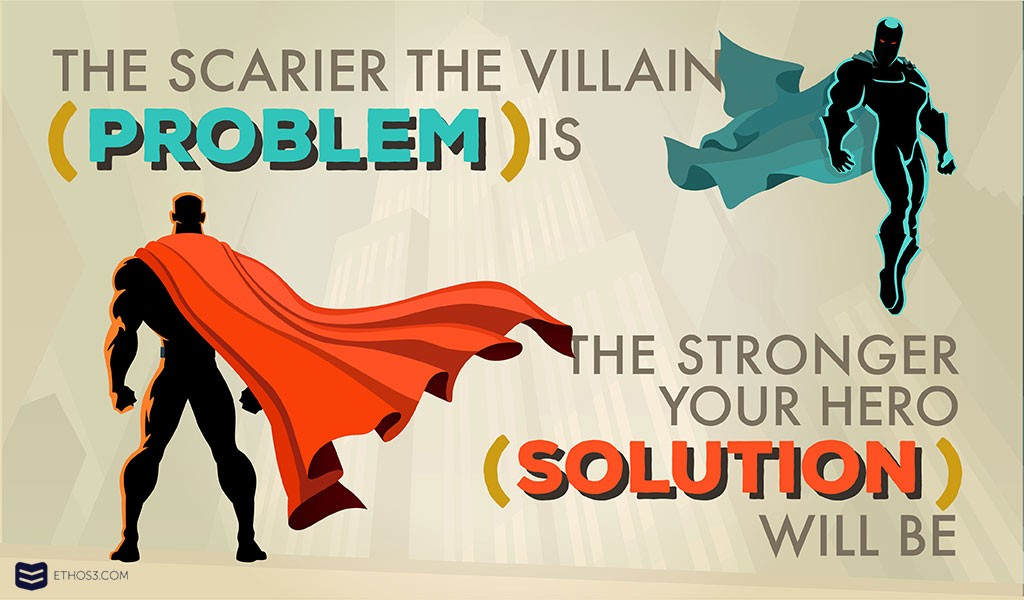Think about famous villains in traditional storytelling: Darth Vader, Voldemort, and Scar. They are wicked and wily but serve a crucial purpose, to lead the hero on their important journey to victory. They increase the odds of the story, and thus the excitement for the audience. The scarier the villain, the higher the odds.
But the villain of a story doesn’t necessarily have to be a person or monster. Sometimes the opposing negative force is something else, like a waning environment, or a devious corporation.
According to Matthew Spaur: “Villains can be literal bad guys, if you’re working in public safety or national defense. Villains can also be harmful forces in the world that you’re trying to overcome: disease, hunger, poverty, discrimination, inequality, ignorance.”
Where do villains fit into a presentation?
Did you know that Charmin increased their social media shares by 585% when they included their mascot bears along with a story-driven campaign? This is because we love stories, we love to follow characters, and we love journeys.
Presentations that are built around a narrative structure are by far more compelling than their straightforward, data driven competitors. This is why your presentation needs a villain, to give your audience something to cheer for, and to increase the stakes of your message and make them emotionally invested in what you have to say.
How do you create a villain?
You don’t have to invent a bogeyman in order to give your story a villain. Ignore the word “villain” for a moment and replace it with the word “problem.” What problem does your idea, product, or viewpoint face?
All pitch presentations are built around the notion of solving a singular problem. Problems like “people don’t have any time to cook at home” or “there isn’t enough clean water for agriculture,” or “many people die from X disease every year.” Whether it’s a small inconvenience or a huge, global issue, problems are everywhere.
Where your problem lies, there lies your villain. That is the dragon you must defeat, the Medusa you must slay. All you need to do is a find a way to incorporate it into the narrative of your presentation.
Make it scary, make it work

The more threatening, scary, and larger than life you make your villain, the more invested the audience will be in seeing them defeated. You see this tactic in marketing all of the time, and may not even know it. Lysol’s new “Healthing” campaign is all about defeating germs and keeping your family safe; in this case, germs are the villains and moms are the hero to defeat them. The scarier they can make germs seem, the more their viewers will be likely to buy Lysol products.
Fully describe your villain in the narrative of your story; why are they so evil? What would happen if they ran the world? Use as many adjectives as you can to fully paint the picture of this threat. Introduce them at the start of your presentation, and then again as the hero or opposing positive force fights them. Devote a slide at the very end to remind the audience of the threat, to give them a sense of relief.
Remember: the scarier the villain (problem) is, the stronger your hero (solution) will be when it defeats the threat.
Looking for more resources to help create a narrative in your presentation? Check out a few of these related articles for inspiration:
Why You Need a Hero’s Journey for Your Next Presentation
The Neuroscience of Storytelling
Focus on the Narrative, Not the Bullets
Need even more guidance? The creative team at Ethos3 can take the wheel and uncover the villain and hero of your story.
